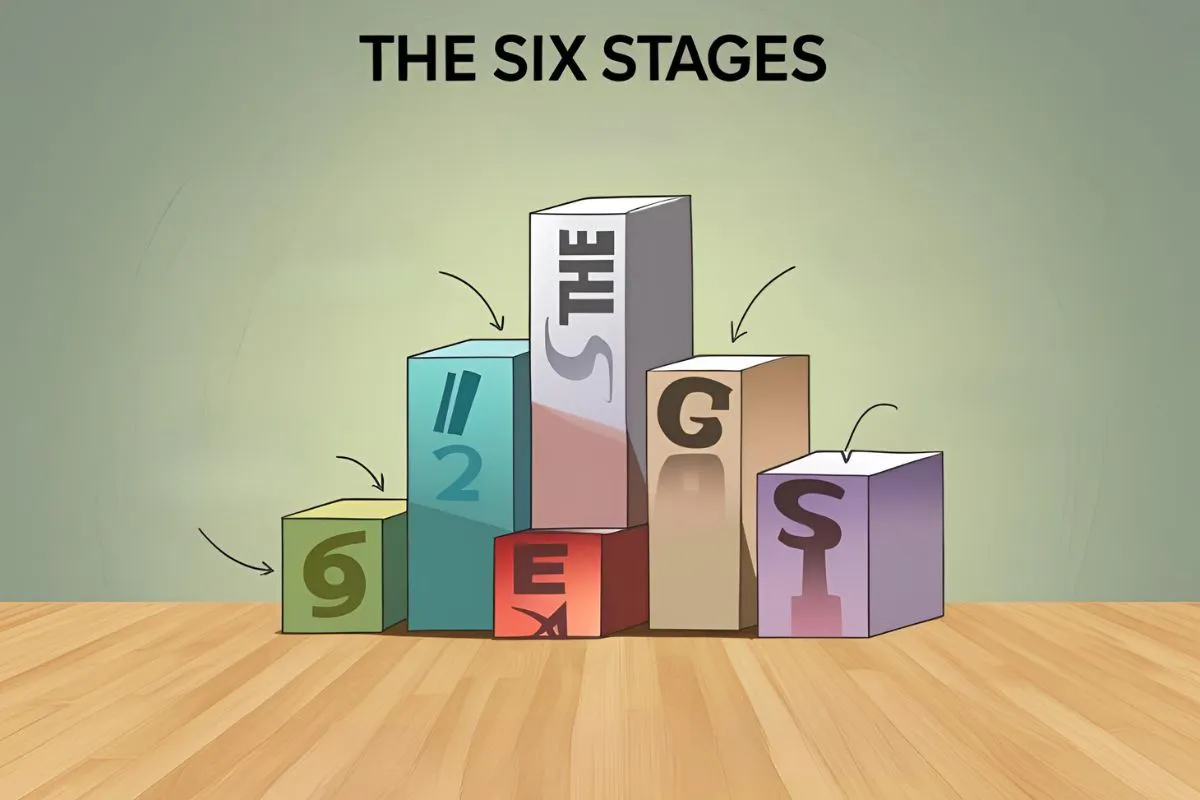The Six Stages of the Product Adoption Process in Marketing

Published April 1, 2025
It’s not just luck, it’s the adoption process in marketing. And understanding it can make or break your next big launch.
Think about the first time you switched from a flip phone to a smartphone. There was a moment, whether it was curiosity, a glowing review, or just FOMO, that pushed you from “what is this?” to “I need this.” That’s the power of the marketing adoption process in action.
In today’s ultra-competitive market, knowing how consumers adopt new products isn’t just helpful, it’s essential. This blog breaks down the six stages of adoption, showing how smart businesses move customers from awareness to full-on loyalty.
So if you’ve been asking yourself, “What is adoption process in marketing, and how do I make it work for me?”, you’re in the right place.
Let’s decode the journey from “meh” to “must-have.”
How to Guide Users Through the 6 Stages of Product Adoption
Let’s face it, getting people to try something new is tough. Even if your product is brilliant, that doesn’t mean users will immediately jump on board. That’s why understanding the adoption process in marketing is so important.
Each stage, awareness, interest, evaluation, trial, activation, and adoption, requires a different approach. Your job isn’t just to sell a product. It’s to guide people through a transformation.
When done right, this process doesn’t just build customers, it builds believers. Ready to learn how to walk your users through every step? Let’s break it down stage by stage.

Help Each and Every User Realize Value with Your Product
Imagine spending months building your product, only to watch users drop off after signing up. It stings. The truth? Users don’t stick around because they don’t see the value fast enough.
Your job is to connect the dots between their problem and your solution, quickly and clearly. This is where user psychology comes in. People adopt what makes their lives easier or better.
So ask: what pain does your product solve? Then, make sure that solution is obvious from the first interaction to the last. It’s not about features. It’s about outcomes.
6 Stages to Get Users to Adopt Your Product
Product adoption isn’t just a funnel, it’s a journey. From the moment someone first hears about your product to when they become a loyal user, they pass through six distinct stages. Understanding these stages helps you meet users where they are, instead of forcing them forward.
Why does that matter? Because forcing people never works. Guiding them does. This framework isn’t just about conversion, it’s about connection.
Let’s walk through the six stages, and how you can support users at each one, starting with the first spark of awareness.
1. Awareness
You can’t adopt what you don’t know exists. That’s why awareness is the first stage of the marketing adoption process. At this point, potential users have never heard of you, or they’ve just barely seen your name in passing.
Your mission? Be unforgettable. Use storytelling, attention-grabbing visuals, or a bold question: “Tired of wasting hours on manual inventory tracking?” This is where brand visibility and emotional connection intersect. Don’t just show your product.
Show the problem it solves, and do it in a way that stops the scroll.
2. Interest
Now that you’ve got their attention, it’s time to spark curiosity. During the interest stage, users are actively exploring your product. They want to know: “Is this worth my time?” Here’s your chance to shine.
Use demo videos, customer testimonials, and value-packed landing pages to feed their curiosity. Make the benefits crystal clear, and show how your solution fits into their world. Don’t bombard them with specs, tell a story they can see themselves in.
People don’t just want features, they want reasons to care.
3. Evaluation
Here’s where the comparison begins. Your potential users are now asking: “Is this better than what I’m already using?” During the evaluation stage, people weigh your product against alternatives, looking at pricing, features, support, and ease of use. Don’t leave them guessing.
Provide side-by-side comparisons, case studies, and clear answers to common questions. Give them the tools they need to say yes with confidence. Be transparent, helpful, and confident in your unique value. If you can prove you’re worth it, without the fluff, you win.
4. Trial
This is the “test drive” moment. Users are finally trying your product, but don’t celebrate just yet. They’re still skeptical. In the trial stage, your goal is simple: show results, fast. Offer guided onboarding, short tutorials, and live support to help them experience the value immediately. Highlight one or two powerful features that solve a pressing problem.
Remember, confusion kills conversions. Make it so easy to get started, they can’t imagine going back. Bonus tip: celebrate small wins. A little encouragement goes a long way.
5. Activation
This is the turning point. Users have explored your product, and now they’re experiencing “aha!” moments. Maybe they set up an integration, closed a task faster, or got a report with just one click.
These small wins drive commitment. In the activation stage, your job is to spotlight those high-value actions and encourage users to repeat them. Use nudges, in-app guidance, or even personal check-ins to keep momentum high.
The goal? Get them to say, “I get it now. This works.”
6. Adoption
They’ve seen the value. They’re using the product. But your job isn’t over. The final adoption stage is about turning happy users into lifelong advocates. Make support accessible. Offer advanced tips, customer communities, and regular product updates that show you’re invested in their success.
Want a growth hack? Ask for feedback, and actually use it. When users feel heard, they stick around. Remember, adoption isn’t a destination. It’s a relationship. Nurture it.

A Strong Product Adoption Process
Product adoption isn’t just a metric, it’s a mirror of how well you understand your users. A solid adoption process in marketing doesn’t just drive revenue. It creates delighted customers who tell their friends, renew subscriptions, and become brand evangelists.
That kind of loyalty? You can’t buy it, you earn it. And it starts with guiding users, not pushing them. Every touchpoint, from awareness to adoption, is a chance to build trust. Take it seriously.
FAQS
What are the 6 stages of product adoption?
The 6 stages are: awareness, interest, evaluation, trial, activation, and adoption. This is part of the adoption process in marketing that helps people go from learning about a product to using it.
What are the 6 steps of the adoption process?
The steps are awareness, interest, evaluation, trial, activation, and adoption. These steps are used in the marketing adoption process to guide customers.
What are the 6 stages of the product cycle?
The product cycle includes idea, development, introduction, growth, maturity, and decline. It’s different from the adoption process in marketing, which focuses on how people start using new products.
What are the stages of adoption in marketing?
In marketing, the stages of adoption process are awareness, interest, evaluation, trial, activation, and adoption. These steps help people learn about and try new things.
What are the stages of the adoption process?
The adoption process in marketing includes six stages: awareness, interest, evaluation, trial, activation, and adoption. It shows how people start using something new.
Final Thoughts
The adoption process in marketing helps you understand how people start using new products. It starts when someone hears about your product and ends when they become a loyal customer. If people get stuck at any stage, good marketing can help move them forward.
That’s why using the right tools and strategy matters. At Correct Digital, we help small businesses like yours grow with smart, data-driven marketing. Whether you need a better website, social media help, or SEO that gets results, we’ve got you covered. Want more people to love your product? Let us help you make it happen.
Hire The Digital Marketing Experts
We take online businesses and turn them into online empires by employing smart digital marketing strategies. Our team of experts are trained in a myriad of marketing skill including SEO to help you rank higher in search results, and ad management to ensure your message gets seen by the people you want. Need a business website that attracts business? We also specialize in website design and online sales optimization to help your business grow like never before.

This Content Has Been Reviewed For Accuracy By Experts
Our internal team of experts has fact-checked this content. Learn more about the editorial standard for our website here.

About The Author
Rei Bayucca has a wealth of knowledge and experience as a professional writer for multiple industries. It is her mission to ensure that her readers receive high-quality, informative content that is both entertaining and educational. Through her writing, Rei aims to educate and motivate readers.



